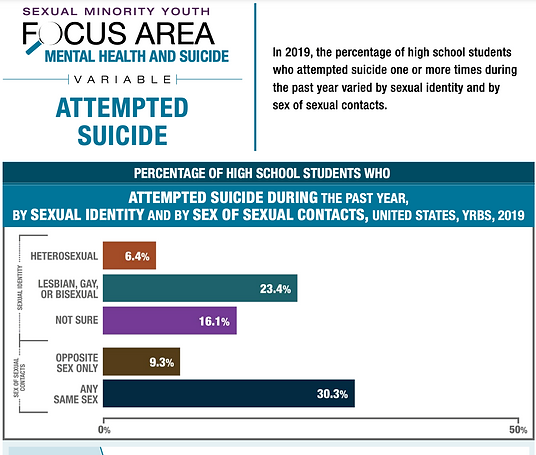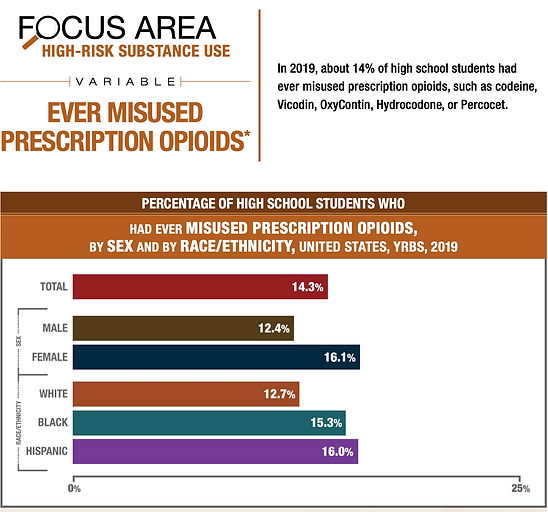Healthcare Providers
To help with providing treatment to patients living with depression, anxiety, and those that are at suicide risk. This page identifies potential changes and recommendations that could benefit patients from the published literature or from interviews with experts
Page Index
1.Clinical Implications from the Research
- Acupuncture as a mode of clinical support
4. Screening for Adolescent Mental Health
Note: Click on images where they appear to see the source


Relevant Research Findings
Compiled below is a list of research articles that contain valuable findings in preventing and interacting with suicide-risk adolescents. To help healthcare professionals stay up to date on the latest research papers, an index is provided that will help you access the desired research finding as well as a link to the paper. To browse more up-to-date papers, a link is provided at the: click here
Index

Addressing attitudes such as maladaptive coping in youth could be an effective suicide prevention effort.
Cognitive Behavioral strategies might be used to further address these maladaptive coping strategies
Addressing Attitudes
The increasing popularity of discussion forums among youths requires a new level of an understanding of their workings among their healthcare providers.
The nature of these trouble-telling and advice-giving forums could potentially hint at a hidden need such as a patient's need to vent or be heard.
Discussion Forums
Special attention should be paid to internet use by adolescents in suicide prevention programs.
Encourage patient to develop healthy boundaries with their internet usage by setting quiet hours
Internet Use
The presence of mental health screenings at schools potentially increases the uptake of healthcare services through referrals by identified suicide-risk adolescents
Mental health treatment providers & schools
Clinics could operationalize patient impulsivity to guide strategies of intervention
Clinical risk screenings should look at impulsivity in two forms (urgency and sensation seeking) as part of heavy alcohol use
Patient Impulsivity
Encouraging patients to participate in programs where a peer leader is involved might help give them a greater sense of social belonging
Peer Leadership
Knowing that adolescents from:
-
Single-parent households
-
Reconstructed families
-
A family where a mother's age differs from her daughter 40+ years
-
Parents with an age gap of 5 or more years
-
Highly-educated parents
Face an increased risk of suicidality
Healthcare Professionals could therefore make appropriate and targeted interventions accordingly
Precursor Knowledge and Identification of
at-risk individuals
Recognition of substance use as a risk factor for suicidality is important.
Therefore, providing treatment for substance use may play a role in suicide prevention
Substance Use
Recognize that both academic stress and depression may play a role in increased suicidal ideation
Stress
Healthcare Providers should have some level of awareness of the favored suicide methods and hotspots
If possible, suicide Hotspots must be fenced, and prevention efforts must be implemented at locations that are identified
Suicide Hotspots & Methods
Health behaviors such as; use of drugs, school fights, being sad, early sexual activity and inhalant usage - might help healthcare professionals and school districts make informed decisions in regards to high-risk individuals
Healthcare professionals might benefit from research identifying minority groups (females and racial groups) as a particularly high-risk populations
Suicide Prevention Programs
Patients who suffer from a certain overarching symptom might show increased improvement from a certain type of treatment. For example, one study showed that:
-
there could be an increased benefit to receiving DBT in patients with high levels of emotional dysregulation
-
Patients with increased levels of family conflict, externalizing problems and a high level of severity markers might experience a greater reduction in self-harming behavior by receiving both DBT and IGST.
(2)
Treatment Type
Research Potential in the field of Acupuncture
In recent decades, the use of needle acupuncture in the treatment of symptoms of anxiety and depression has grown in popularity (37). While many studies have investigated the role of needle acupuncture in mitigating the effects of generalized anxiety disorder and major or minor depression, a great number of papers call for increased research in that area (17,33,37,40).
To get a more comprehensive understanding of what the clinical implications of acupuncture involved interventions, please refer to the videos below, where I interview Dr.Broderick, a licensed developmental psychologist with a doctorate in acupuncture.
Approaches from Eastern and Chinese Medicine in Treating Mental Health Conditions
The Role of Acupuncturists in a Clinic
Herbal Remedies & Serotonin
Relevant YRBSS Graphs
The following graphs borrowed from the Youth Behavior Risk Surveillance Survey provide a visual to some of the previously discussed precursors to suicide. Awareness of these suicide predictors is crucial in healthcare screenings as they could aid in the identification of at-risk adolescents
Sexual Orientation and Suicide-Risk
Data from the Youth Risk Behavior Surveillance Survey showcases the association between adolescent sexuality and feelings of sadness.
Most at risk of persistent feelings of sadness or hopelessness:
1. Individuals who experienced sexual contact with members of the same sex
2. Individuals who identify as:
-
Lesbian
-
Gay
-
Bisexual
Data from the Youth Risk Behavior
Surveillance Survey showcases the
association between adolescent sexuality
and suicide planning
Most at risk of suicide planning:
-
Individuals who experienced sexual contact with members of the same sex
-
Individuals who identify as:
-
Lesbian
-
Gay
-
Bisexual
Data from the Youth Risk Behavior
Surveillance Survey showcases the
association between adolescent sexuality
and suicide attempts
Most at risk of attempting suicide:
-
Individuals who experienced sexual contact with members of the same sex
-
Individuals who identify as:
-
Lesbian
-
Gay
-
Bisexual
Substance Use and Sex/Race
Data from the Youth Risk Behavior Surveillance Survey showcases the association between opioid misuse and sex/race:
Sex most at-risk of opioid misuse:
1.Female
2.Male
Race most at-risk of opioid misuse:
1. Hispanic
2. Black
3.White
Data from the Youth Risk Behavior Surveillance Survey showcases the association between the use of illicit drugs and sex/race:
Sex most at-risk of illicit drug usage:
1. Male
2. Female
Race most at-risk of illicit drug usage:
1. Hispanic
2. Black
3. White
Bullying
Data from the Youth Risk Behavior Surveillance Survey showcases the association between electronic bullying and sex/race:
Sex most likely to be electronically bullied:
1. Female
2. Male
Race most likely to be electronically bullied:
1. White
2. Hispanic
3. Black
Data from the Youth Risk Behavior Surveillance Survey showcases the association between electronic bullying and sex/race:
Sex most likely to be electronically bullied:
1. Female
2. Male
Race most likely to be electronically bullied:
1. White
2. Hispanic
3. Black
Screening for Adolescent Suicide as a Healthcare Professionals
Healthcare professional play an important role in suicide prevention by conducting suicide screenings and making appropriate referrals. Therefore, the proper administration of screenings could be life-changing for some adolescents.
Outlined below, are recommendations from the American Medical Association for healthcare professionals conducting mental health screenings.
Risk Factors to Look Out For
In addition to the risk factors outlined by the previously mentioned findings, the following image lists the risk factors and protective factors pointed out by the American Medical Association when screening adolescent patients

Screening Tools
The following image shows the screening tools that the American Medical Association recommends for physicians screening adolescent patients

What to Do When a Patient Screens Positive for Suicide
The document that follows describes the steps recommended by the American Medical Association after a patient screens positive for suicide








